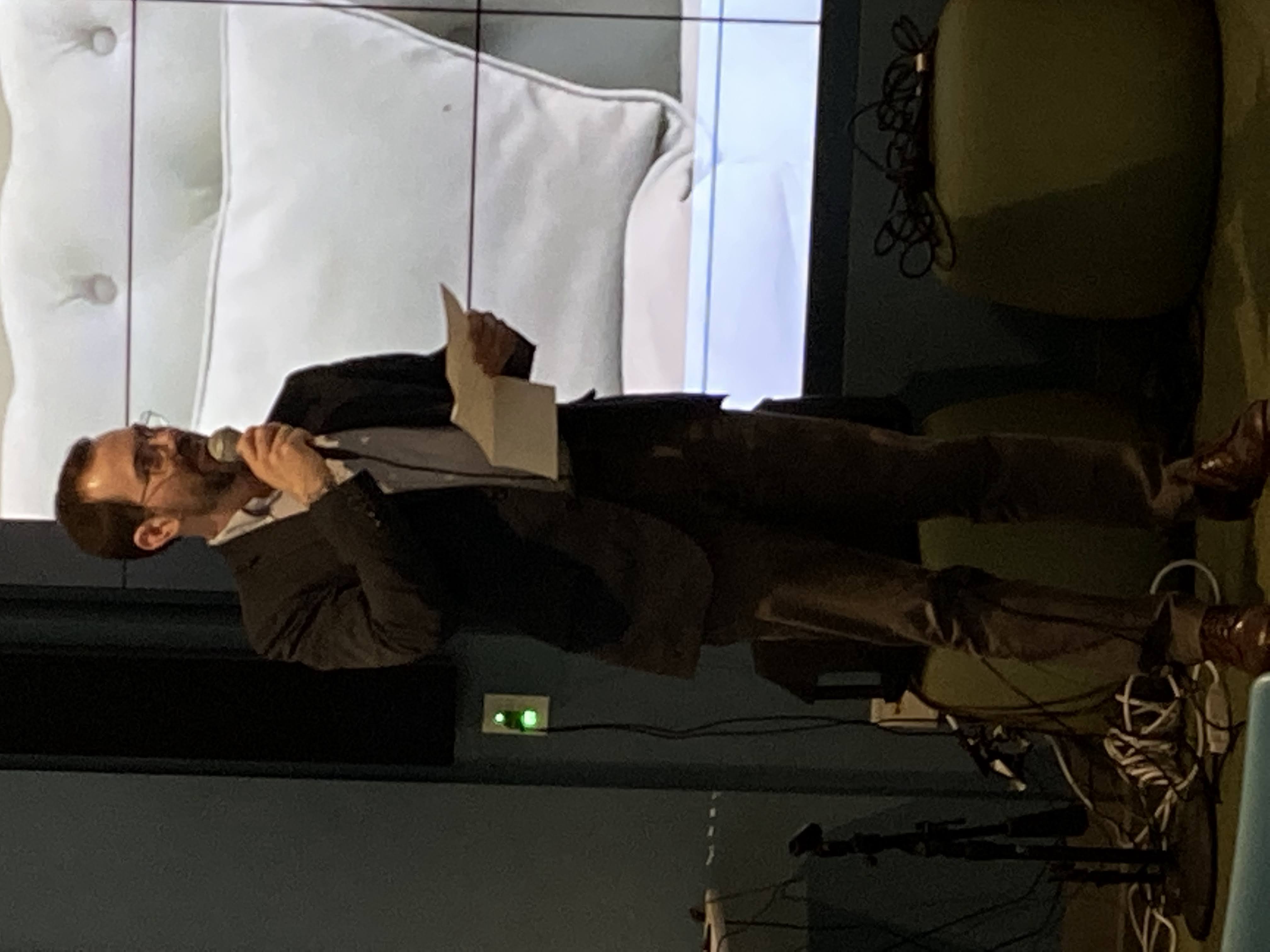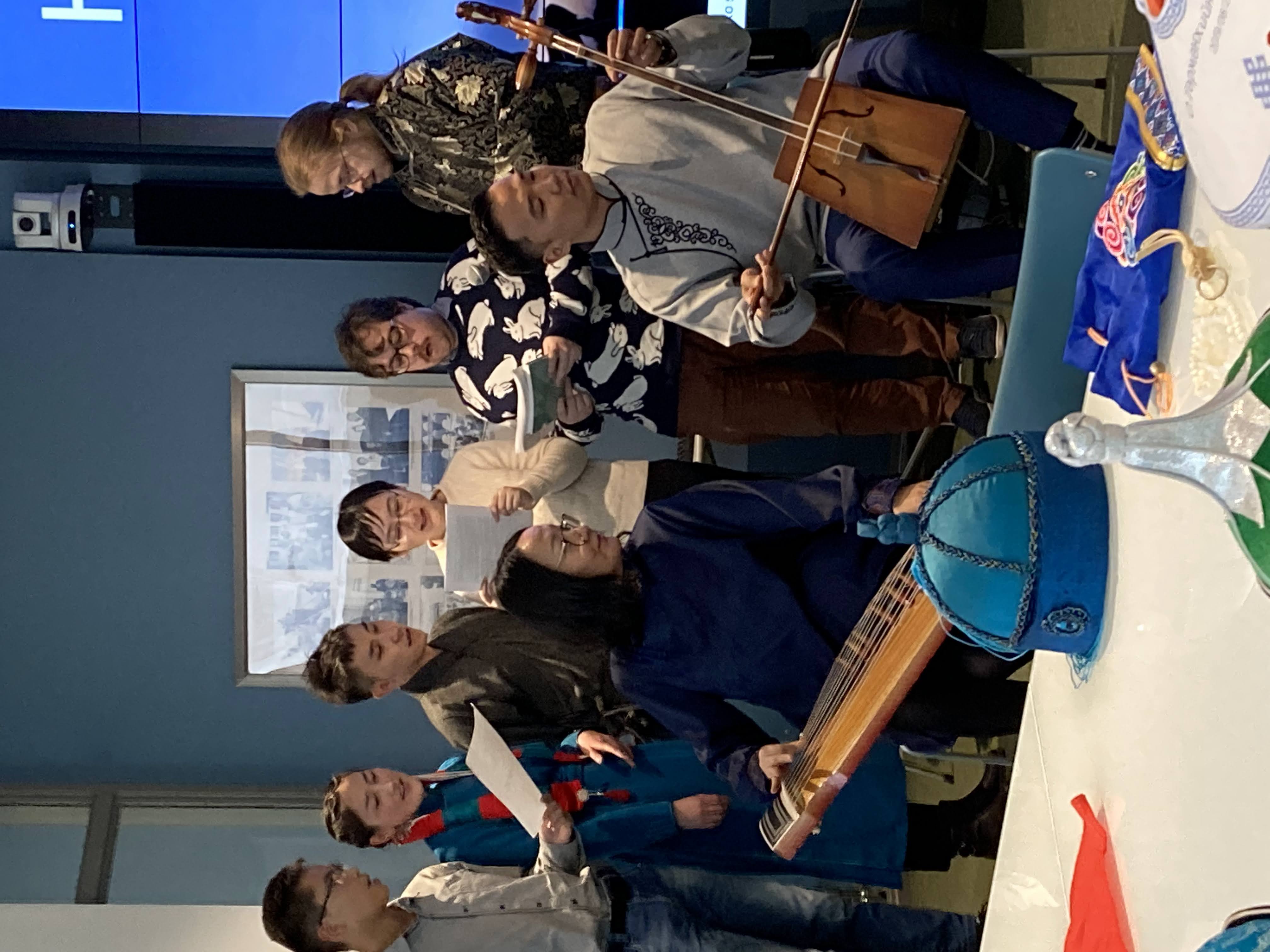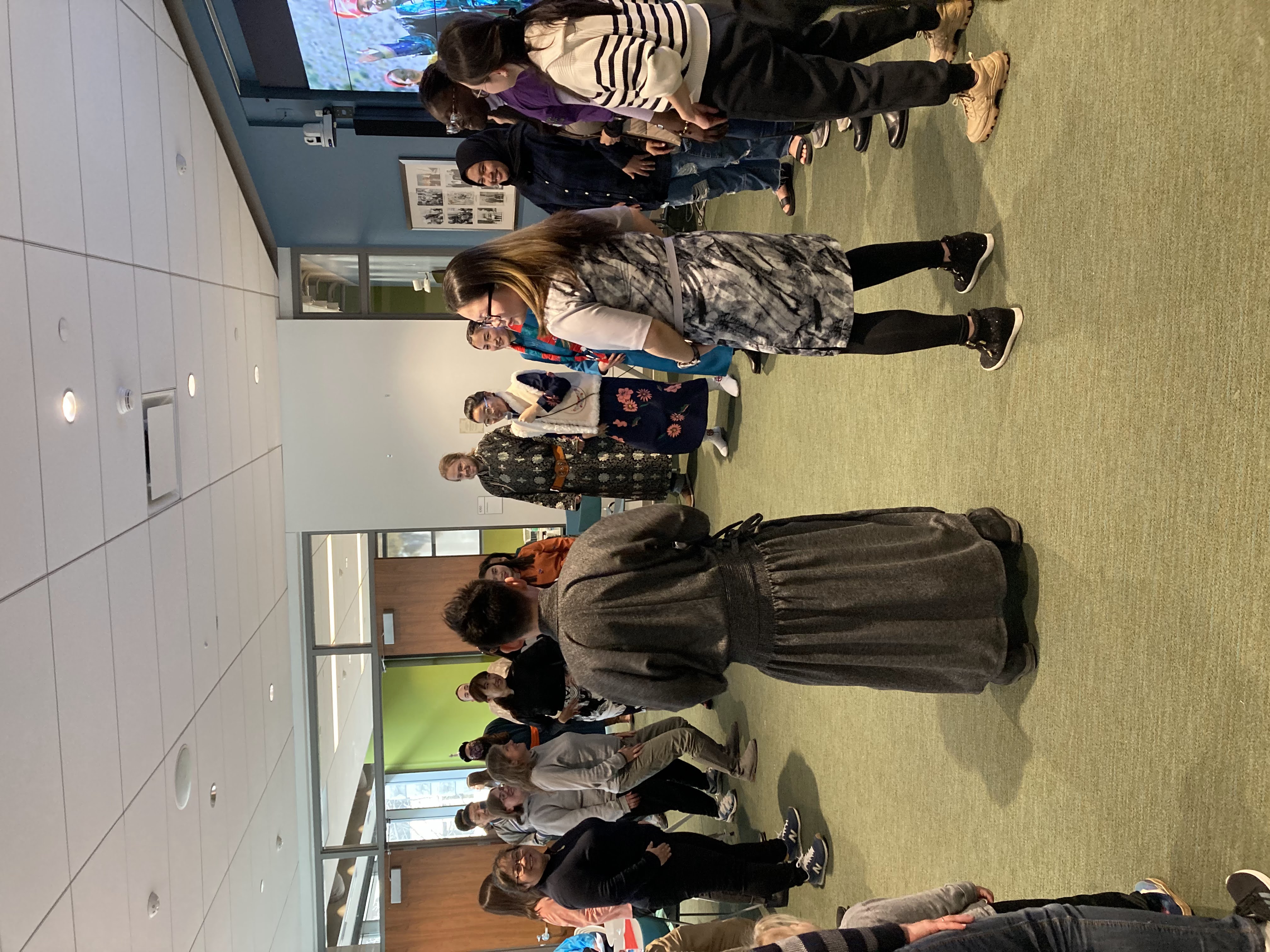For the first time since before the COVID pandemic, the Bloomington Mongolian community came together to celebrate the Mongolian New Year, Tsagaan Sar. This February, Mongolian language students, faculty, staff, friends, and many more gathered together to celebrate the beginning of the new year.
On February 18, Bloomington’s Mongolian community, Department of Central Eurasian Studies students and faculty, and the general public came together to celebrate Tsagaan Sar – the Mongolian lunar new year. The event began with Sam Bass, Visiting Assistant Professor of Mongolian studies, recounting the events that took place in the previous Years of the Female Black Hare, in keeping with a tradition begun by the late Professor György Kara. Graduate student Joshua Sims and Mongolian Fulbright Language Teaching Assistant Nyamgerel Purevjav demonstrated some of the customs associated with Tsagaan Sar, which include formal ways of greeting one’s elders and exchanging snuff tobacco bottles. This was followed by performances by members of the Mongolian community and students of the Mongolian language, which included a few musical pieces played on the horsehead fiddle and the zither, a calligraphy station, poetry readings, traditional dance, and a fashion show showcasing Mongolian clothing. The attendees enjoyed a lunch of meat dumplings and salad catered by the Little Tibet Restaurant.


Left: CEUS PhD Student Joshua Sims (left) and Mongolian FLTA Nyamgerel Purevjav (right) introduce the festivities. Right: CEUS Visiting Assistant Professor Sam Bass shares the history of the Female Black Hare Year.


Left: (from left to right) Zixuan Yu, Nyamgerel Purevjav, Donduk Dun, Bethany Siying Li, Anton Ermakov, and Joshua Sims sing the Mongolian folk songs "Tsagaan Sar" and "Shigshirgiyn ay," accompanied by Ochmaa on Mongolian zither (front left) and Delgerbat on horsehead fiddle (front right). Right: Zolboo and Nyamgerel lead participants in a traditional Mongolian dance "Juurai Gelden"


